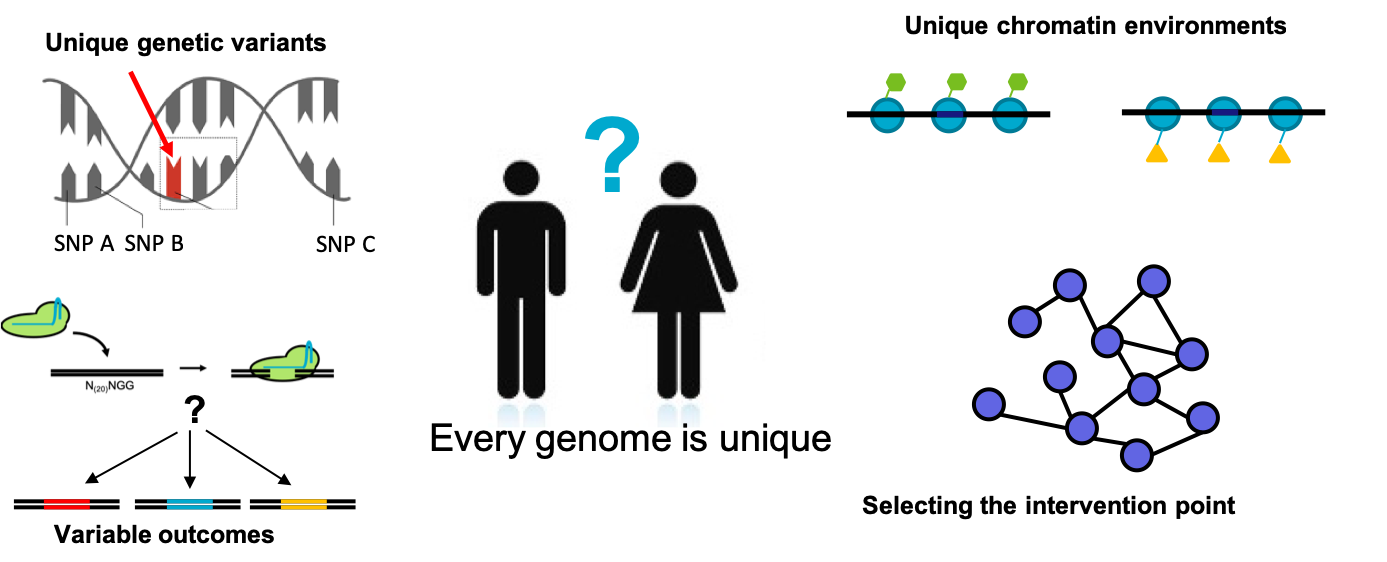New genome engineering technologies, like CRISPR-Cas9, are revolutionising how we think about genetics. The ability to make targeted changes to a living cell’s genome has huge implications in fields like precision health, agriculture and biosecurity.
But genomes are big, and everyone's is different. How do you design a tailored approach for a specific genome? How do you know where to target amongst the billion bases in a human genome?

Digital Genome Engineering is the application of computational approaches to overcome these challenges through modelling and optimisation of genome engineering applications. Using this approach we've developed models for predicting the overall activity of gene editing system (TUSCAN), evaluating an individual's risk profile (VARSCOT) or identifying the best strategy for intervention (CUNE). Armed with these models, we're now working in collaboration with others to develop more sophisticated genome engineering applications.

In collaboration with Macquarie University, we're using genome engineering techniques to recreate complex disease genotypes in laboratory models, allowing us to better explore how these diseases evolve and test treatment options. Through our work with the Children's Medical Research Institute, Sydney Children’s Hospitals Network (SCHN), as well as through our collaboration with Jinan University (China), we're taking it a step further and looking at how these technologies can be used to directly treat causative mutations.
Genome engineering has great potential but faces many challenges before it can be effectively applied in all contexts. By using digital approaches, such as machine learning and modelling, we can help over come these obstacles.
Find out more about our genomic target scanning (GT-Scan) products and read about our other activities in this space.


